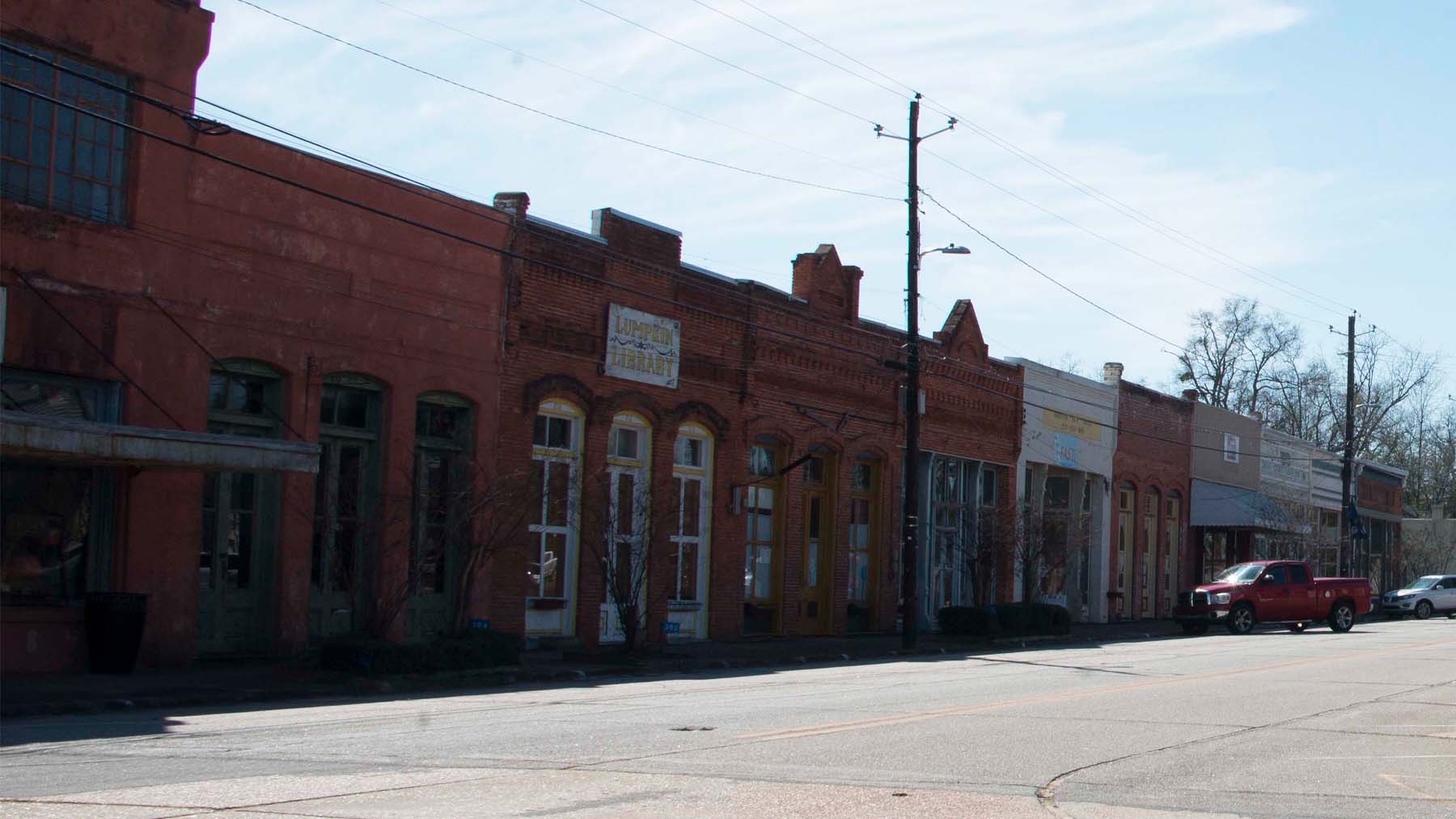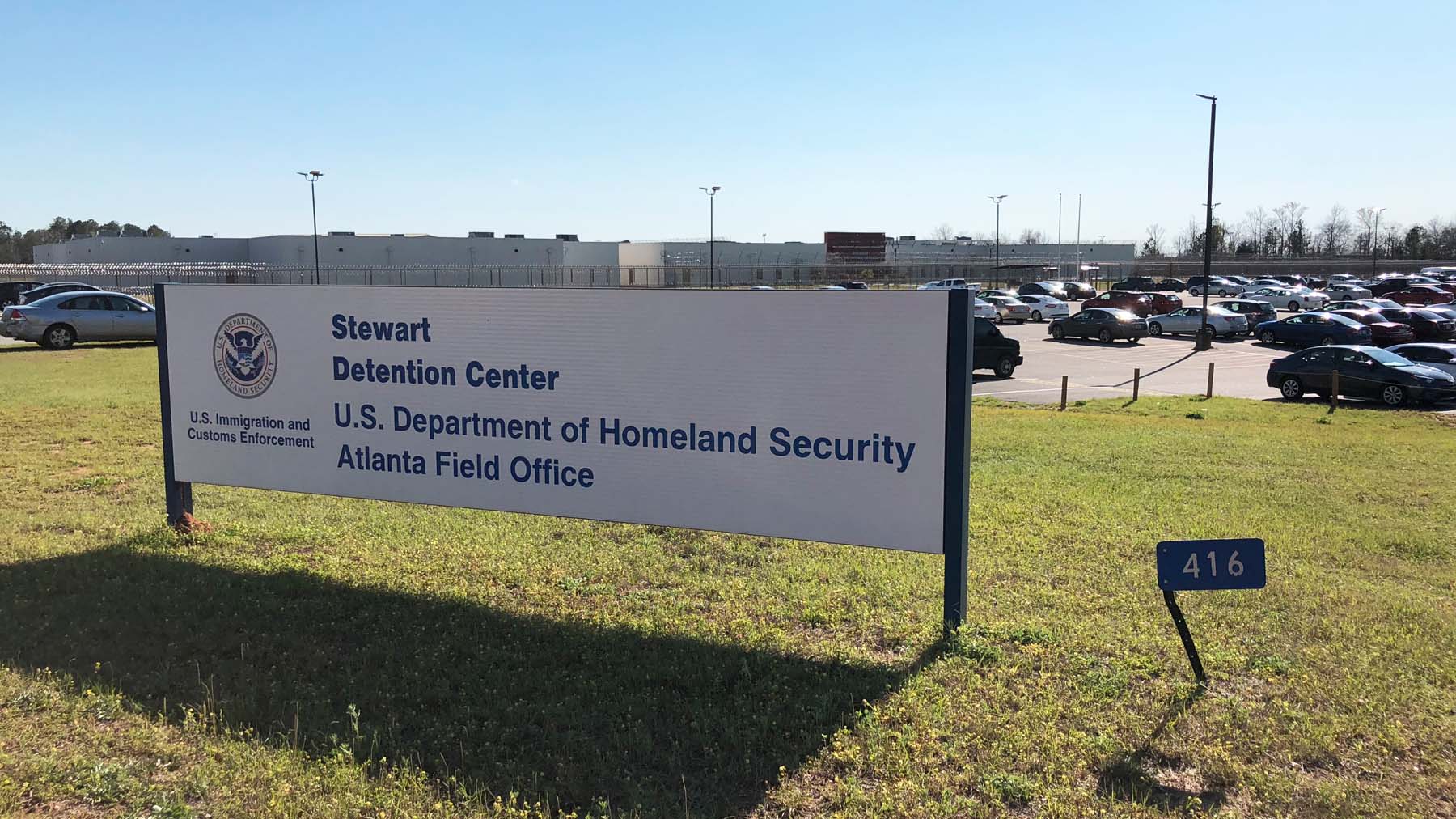Volunteer: Reflections on my experience fighting the deportation machine at Stewart Detention Center
On the sunny, brisk morning of the first day of Vanderbilt spring break, I am cramped in a bronze minivan with six other students, cruising along the highway out of Nashville.
All of us are Vanderbilt students, but we have only just met. My six companions are all law students. I am the lone graduate student on the trip who is helping as a Spanish interpreter, although I have taken immigration law courses. To break the ice, we go around one by one and introduce ourselves, including where we are from.
It quickly becomes clear we are a very diverse group. We had grown up across the U.S., from New England to California and from Ohio to Arizona. Collectively, we speak five languages besides English. We are also all descendants of immigrants: Our parents and grandparents were Japanese, Iranian, Palestinian, Sierra Leonean, Polish and French.
My father is from Chile, having immigrated here in the 1980s in search of a better life. Growing up in Massachusetts, I had close childhood friends who are also the daughters of immigrants. Immigration was very much a central part of my life, as it clearly was for my peers on the trip.
The extensive geographic and ethnic diversity present in that crowded minivan was emblematic of a large part of this nation’s foundation in immigration. With immigration such a big part of each of us, how could it be such a problem now?
This critical reflection was particularly relevant as we ventured down to Lumpkin, Georgia to fight for immigrant justice. As participants of Vanderbilt’s pro bono spring break trip, we were volunteering with SIFI to offer pro bono legal counsel and translation services to detained immigrants at Stewart Detention Center.
Lumpkin is a small, abandoned town of a little over 1,000 inhabitants in southwest Georgia. It is about a two-and-a-half-hour drive from Atlanta through strip malls and untouched expanses of trees.
The old town square of Lumpkin feels like a quiet, eerie movie set. The one-block strip of brick storefronts is lined with dark windows and tattered awnings. Only the Christian Gun Store remains in business. There are two restaurants in town; one is a meat-and-three cafeteria that’s only open for lunch, and the other is a barbecue restaurant only open on weekends. Other than that, the only sources of food are a couple of convenience stores. Fresh fruits and vegetables are nowhere to be found.
The deserted, forgotten setting of Lumpkin is home to the notorious Stewart Detention Center. Stewart is known for its grave violations of due process rights, and for detainees’ limited access to legal consultation. Only about 5 percent of Stewart detainees are granted asylum – compared to 46 percent nationally – and Stewart’s deportation rate is among the highest in the country at about 93 percent.
The facility was originally built as a medium-security prison. It was subsequently repurposed as a detention center operated by the Corrections Corporation of America (CCA), which has rebranded itself as CoreCivic. Stewart now holds about 1,900 male and transgender female non-citizens who are detained for deportation. For each person locked inside every day, the corporation makes a substantial profit.
As volunteers with the SPLC, we were there to conduct screening interviews with detainees at Stewart. I paired up with one of the law students as a Spanish to English, and English to Spanish interpreter for the interviews. The goal was to help the immigrants obtain release from detention through bond or parole.
Non-citizens who are not detained are much more likely to win their immigration cases than those who are confined inside immigration prisons. So we were intervening at a single but crucial point in the deportation system.
Each morning during our week in Lumpkin, we drove to the detention center, which really operates like a prison, to meet with the detainees in the non-contact visitation rooms. There were only three rooms for almost 2,000 detained immigrants.
The whole procedure of entering Stewart is full of countless barriers – both physical and temporal. Tall fences loom above, lined with spirals of barbed wire. Two remote-controlled gates slowly slide open, one at a time, to admit legal and family visitors. A long, cement pathway leads to the front entrance.
The waiting room is a bare, austere space that smells faintly of a dental clinic. At one end of the room sit 12 plastic chairs, and at the other, the CCA employees stand behind the front desk. A full-body scanner and a conveyer belt separate both sides. Besides a machine that sells phone call minutes and some framed photos of CCA executives hanging on the wall, the room is empty.
At the front desk, the stern employees slowly and begrudgingly process our requests to see the detainees. For each detainee we want to see, we must fill out some forms with his name and “alien number” – a string of nine digits that reduces a human being to a number. Then the employees disappear so they can summon the detainee to the visitation room. Sometimes, they make us wait a half hour, sometimes a few hours. No cell phones are allowed, so we just take in our surroundings.
As we sit there, waiting, we observe crowds of CCA employees walking into and out of Stewart during shift changes. They cross through quickly, flashing ID tags and waltzing past the scanners. With our SPLC nametags, we are not admitted as easily. And the detainees trapped inside have even less freedom to move, less access to justice.
Finally, our names are called. We place our shoes onto the conveyer belt and walk through the scanner. They sift through our papers, searching for something suspicious. We receive bright red visitor tags to clip onto our clothing. Our wrists are stamped with mysterious ink numbers that are only visible under a blue light. It seems like an excessive number of precautionary measures for a non-contact visit.
Once we are led through two more doors and another gate, my partner and I arrive at the visitation room. It is a small area enclosed in white-painted cement blocks with a large glass window and two chairs. A black phone on the right side of the window is the only way to communicate with the detainee on the other side. Even with the phone pressed firmly against my ear, his voice is faint and distant. After passing through all the fences, gates, doors and ID checks, we are finally in the same room with him, but he still seems trapped and far away.
In that tiny visitation room, we hear the detainees’ stories. We see some of the faces behind the numbers. Many have been living in the U.S. for decades. Many have U.S.-citizen children. Many do not have criminal convictions – they are simply imprisoned for being born in the wrong country.
With the phone sticky against my ear, I interpret my partner’s questions into Spanish and the detainee’s answers back into English. The fast pace of questions and translation feels almost transactional. Sometimes, though, we are reminded of the human being behind the glass – a bent head, a teary eye, a slight smile. We want to tell him that everything is going to be okay, but we simply can’t promise that.
From our week at Stewart we saw firsthand how the U.S. treats non-citizens like they are criminals. We witnessed the disheartening reality of the U.S. deportation machine. The seven of us may be ill-equipped to tackle the entirety of the cruel immigration system, but we helped where we could.
And we will continue to be advocates for justice. As citizens, as descendants of immigrants, and as human beings, we must demand better.
Andrea Delgado is a graduate student in Latin American Studies at Vanderbilt University in Nashville, Tennessee. She recently spent her spring break volunteering as an interpreter for the Southeast Immigrant Freedom Initiative (SIFI) – a project of the SPLC that enlists and trains volunteer lawyers to provide free legal representation to detained immigrants facing deportation proceedings in the Southeast.



